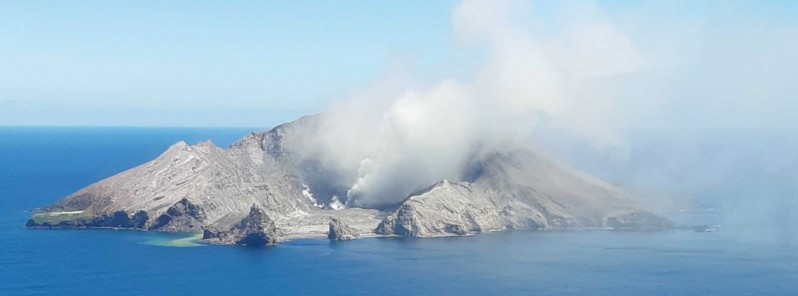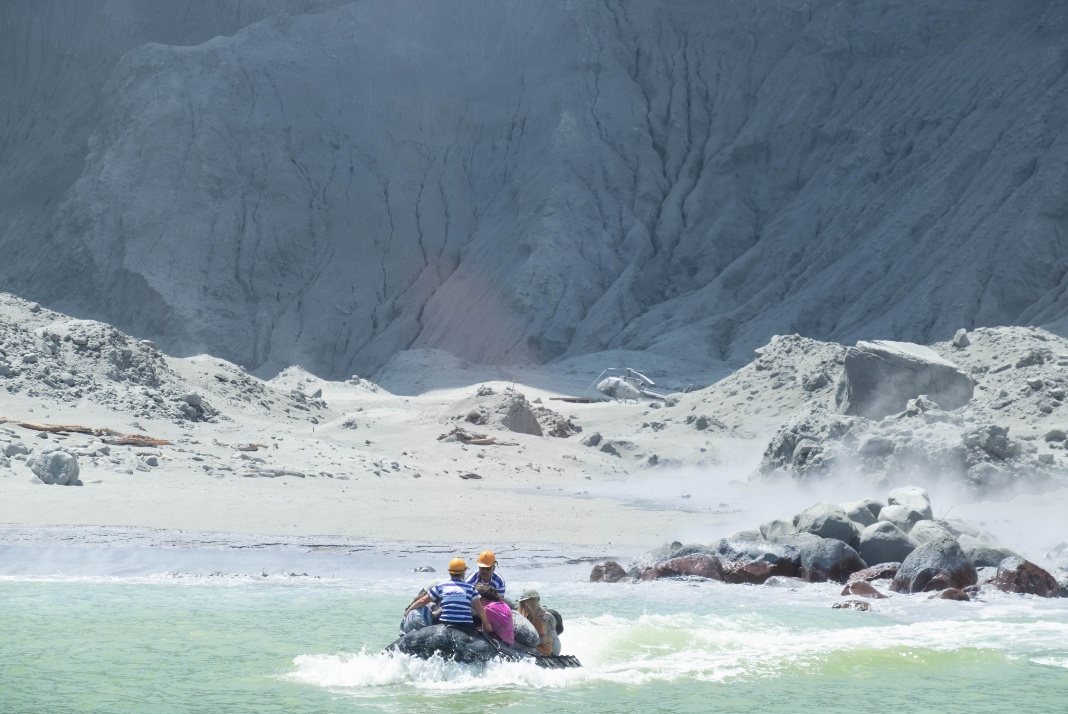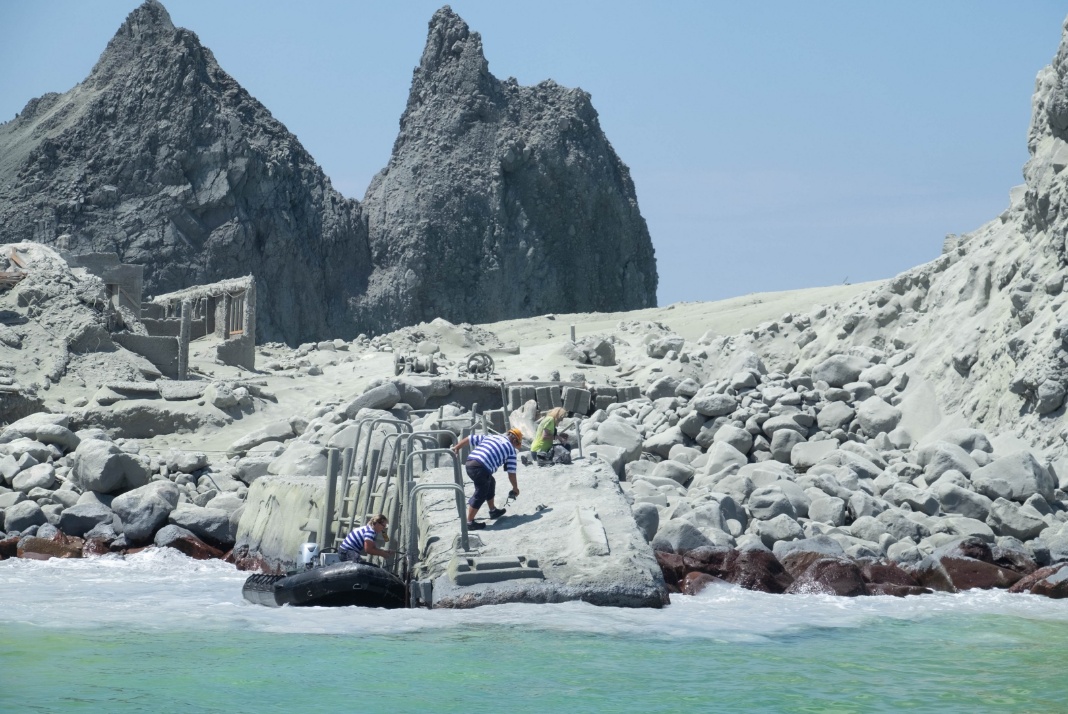GeoNet raises Alert Level and Aviation Color Code for White Island volcano, New Zealand

Small amounts of volcanic ash are being carried in the stream and gas plume at White Island/Whakaari volcano in New Zealand and deposited on the island's webcams, GeoNet reported November 13, 2020. As a result, the Volcanic Alert Level has been raised to Level 2 and the Aviation Color Code to Yellow.
GeoNet scientists completed a gas monitoring and observation flight over the volcano on November 12, following a period of severe wet weather.
They observed occasional ash deposits on some of the islands’ webcams, and a darker than usual plume was also reported at times from the mainland. Observations during the flight confirmed the presence of ash in the plume.
"The fine particles (ash) originate from the main steam vent at the back of the crater lake," Duty Volcanologist Yannik Behr noted.
"Initial analyses of the ash particles suggest that it is loose material from around the vent or underlying conduit being carried by the steam and gas emission."
While the gas output observed on November 12 is higher than recent observations, other monitoring parameters do not show significant changes.
Observations from the flight show there is no substantial change in the location and size of active vents. The rainfall has formed a pool of water on the floor of the 1978/90 Crater, re-forming a shallow lakelet.
"During the past week, a small sequence of earthquakes has been located close to the volcano and we had several episodes of slightly increased volcanic tremor. None of these observations are unusual for White Island and it remains unclear whether these are just coincidental with the incorporation of material in the plume," Behr said.
During fine weather conditions, moderate to large gas-steam plumes will be seen rising above the island and trailing off downwind. Some of the particles may be carried a few kilometers downwind but are unlikely to reach the mainland, he added.
"Should any explosive activity produce a significant ash cloud, the likelihood of ash affecting the mainland remains very low. The gas and steam plume may be noticed on the mainland as weak acid rain."
The changes at the vent resulting in the minor ash emissions have not been observed at Whakaari/White Island in 2020 and indicate a greater level of unrest at the surface.
There are no indications currently of a substantial change in the overall behavior of the volcano. The main plausible triggers for a sudden eruption with little or no warning remain the collapse of unstable material in an active vent and the possible ingress of water underground onto the shallow magma body.
Overall, recent observations are consistent with moderate-heightened volcanic unrest and, therefore, the Volcanic Alert Level is raised to Level 2 and the Aviation Color Code to Yellow.
Explosive eruption at White Island at 01:11 UTC on December 9, 2019, killed 21 tourists, including two who are missing and declared dead. 26 people suffered injuries, many of whom suffered severe burns. There were 47 people on the island at the time of the eruption.




White Island Tour operators rescuing people. Images captured by Michael Schade at 14:24 LT (13 minutes after the eruption)
My god, White Island volcano in New Zealand erupted today for first time since 2001. My family and I had gotten off it 20 minutes before, were waiting at our boat about to leave when we saw it. Boat ride home tending to people our boat rescued was indescribable. #whiteisland pic.twitter.com/QJwWi12Tvt
— Michael Schade (@sch) December 9, 2019
Geological summary
Uninhabited 2 x 2.4 km (1.2 x 1.5 miles) White Island, one of New Zealand's most active volcanoes, is the emergent summit of a 16 x 18 km (10 x 11.2 miles) submarine volcano in the Bay of Plenty about 50 km (31 miles) offshore of North Island.
The island consists of two overlapping andesitic-to-dacitic stratovolcanoes; the summit crater appears to be breached to the SE, because the shoreline corresponds to the level of several notches in the SE crater wall. Volckner Rocks, four sea stacks that are remnants of a lava dome, lie 5 km (3.1 miles) NNE.
Intermittent moderate phreatomagmatic and strombolian eruptions have occurred throughout the short historical period beginning in 1826, but its activity also forms a prominent part of Maori legends.
Formation of many new vents during the 19th and 20th centuries has produced rapid changes in crater floor topography. Collapse of the crater wall in 1914 produced a debris avalanche that buried buildings and workers at a sulfur-mining project. (GVP)
Featured image: White Island volcano on November 12, 2020. Credit: GeoNet

I think the correct term for a lakelet is a pond.